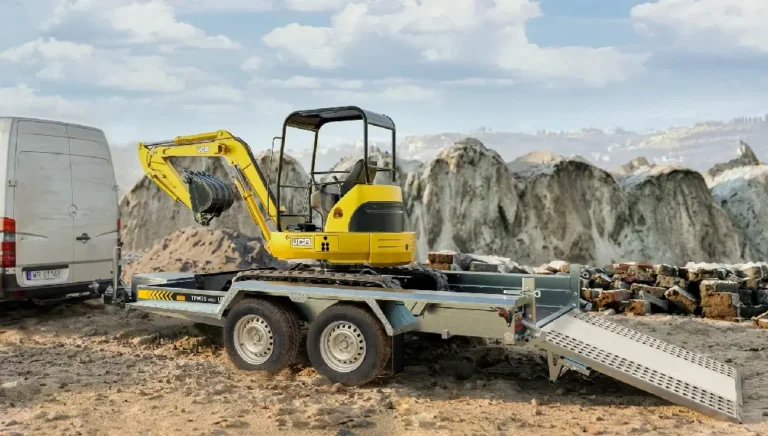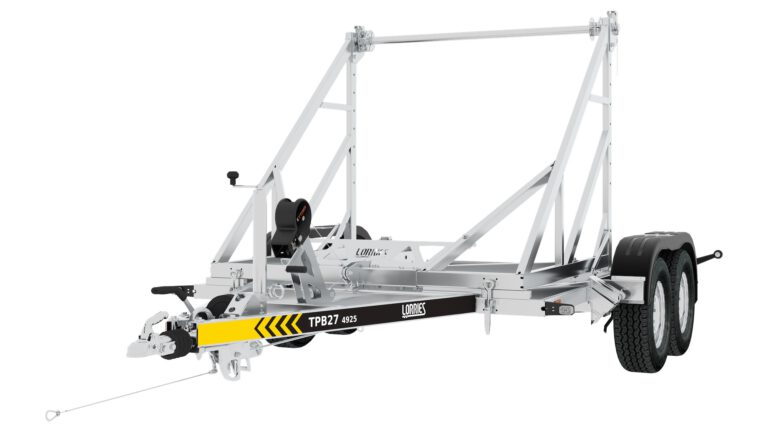Transporting on a trailer - how much maximum can the load project behind the trailer?
Trailer transport can be a convenient and cost-effective solution for transporting a variety of items such as furniture, garden equipment or vehicles. However, to ensure that the whole process runs smoothly and safely, it is worth paying attention to a few key aspects.
Preparing your trailer for transport is the first step you should take with due care. Make sure the trailer is in good working order and the tyres have the correct pressure. Also check that all lights are working properly. It is also important to choose the right trailer for the load you are transporting. Pay attention to its dimensions, load capacity and how the load is secured. Keep in mind that exceeding the gross trailer weight limit can lead to damage, as well as fines and loss of insurance.
Securing the load is another key aspect that affects the safety of trailer transport. Use lashing straps, chains or other suitable means to prevent items from moving during the journey. Make sure that the load is evenly distributed on the trailer. This will guarantee stability and better control of the vehicle.
When travelling safely with a trailer, keep in mind to adapt your speed to the road conditions and to the load of the trailer. Pay attention to the speed limits applicable to vehicles with trailers, as well as the required spacing between vehicles. If necessary, use designated stopping places to check the condition of your trailer and load. It is also worth keeping in mind the trailer transport regulations applicable in your country. In Poland, trailers with a gross weight of up to 750 kg do not require additional insurance or a technical inspection. Trailers with a higher weight must be registered and have valid documents.
What is trailer transport and what are its advantages?
Trailer transporting involves transporting loads by means of a specially adapted vehicle that is attached to a towing vehicle. The advantages of this solution include, first and foremost, time and money savings, as trailers allow more items to be transported at the same time, eliminating the need for multiple trips. In addition, trailer transport makes it possible to transport bulky items that would not fit in a passenger car.
Different types of trailers for transport: from motorbikes to yachts
There are different types of trailers on the market that can be adapted to specific transport needs. Here are some examples:
- Sideboard trailers - ideal for transporting furniture, garden equipment or bicycles;
- CAR TRANSPORTERS - designed for transporting vehicles such as cars or quads;
- Motorcycle trailers - specially designed for transporting motorbikes;
- Trailers for transporting jet-skis, motorboats, pontoons, boats and yachts - enabling the transport of boats and yachts;
- Construction trailers - used to transport construction vehicles and machinery.
When choosing a trailer, it is worth paying attention to its load capacity, dimensions and the way the load is secured to suit individual needs.
How to prepare the trailer and secure the load for transport?
Preparing your trailer for transport is crucial to the safety and efficiency of the whole process. Here are a few steps to follow before your journey:
- Check the condition of the trailer - make sure the trailer is in good condition and the tyres have the correct pressure;
- Lighting check - check that all lights are working properly;
- Attaching the trailer to the towing vehicle - make sure the hitch is properly attached and its safety catch is closed;
- Placing the load on the trailer - spread the load evenly to ensure the stability of the trailer;
- Securing the load - use lashing straps, chains or other suitable means to prevent items from moving while driving.
Following the above tips will allow safe and efficient transporting on a trailer, regardless of the type of load being transported.
How much cargo can protrude from a trailer: regulations and recommendations
In Poland, the regulations on protruding cargo from a trailer are set out in the Road Traffic Law. Under these regulations, cargo may protrude from the trailer. respectively cargo:
- that protrudes beyond the side contours of the vehicle must be positioned in such a way that the sum of the vehicle width and the load does not exceed 2.55 m, but in the case of a vehicle width of 2.55 m it may not exceed 3 m. However, the load may only protrude on one side by a distance not exceeding 23 cm.
- shall not project from the rear of the vehicle more than 2 m from the rear edge of the vehicle or of a stanchion trailer where this distance is measured from the axle of the trailer.
- shall not project from the rear of the vehicle more than 2 m from the rear edge of the vehicle or of a stanchion trailer where this distance is measured from the axle of the trailer.
If these values are exceeded, it is necessary to obtain a special permit for the transport of abnormal loads.
Vehicle width restrictions with cargo: what you need to know
In Poland, the maximum permitted width of a loaded vehicle is 2.55 metres (or 2.6 metres for refrigerated vehicles). If the load exceeds these values, it is necessary to obtain an abnormal load permit. In addition, it is worth keeping in mind:
- Road restrictions - some roads may have width restrictions, which can make it difficult to drive with a wide load;
- proper marking - wide loads should be properly marked, e.g. with red flags or warning lights;
- safe manoeuvring - a wide load can make manoeuvring difficult, so it is advisable to take extra care when driving.
How do you properly mark a load protruding from the rear of a car trailer?
Now that you know how much cargo can protrude from the trailer, it is worthwhile for you to know how to mark it correctly. If the load is protruding from the rear of a passenger car or a trailer being towed by a passenger car, use a red flag measuring at least 50 x 50 cm and place it at the most protruding edge of the load. Keep in mind that these rules apply to the safe transport and marking of protruding loads, which is important for visibility and road safety.
In summary, choosing the right type of trailer depends on the type of cargo to be transported, its dimensions, weight and loading and unloading needs. Keep in mind to carefully analyse your needs and the specifics of the load you are transporting in order to choose the optimal transporting solution. The regulations described above apply to the territory of the Republic of Poland.



